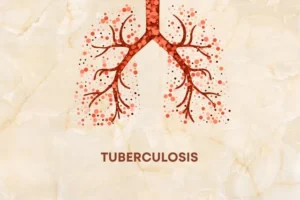How to reduce blood sugar level immediately

How to reduce blood sugar level immediately. To reduce blood sugar levels immediately, drink plenty of water and engage in physical activity. Consuming high-fiber vegetables can also help lower glucose quickly.
Managing blood sugar levels is a critical aspect of maintaining overall health, especially for individuals with diabetes or prediabetes. Sudden spikes in glucose can be alarming and require swift action to prevent complications. Adopting an active lifestyle, where regular exercise becomes a norm, plays a significant role in controlling blood sugar fluctuations.
For immediate effects, certain quick-acting strategies like hydrating with water can facilitate the kidneys in flushing out the excess glucose through urine. Emphasizing a diet rich in fiber, particularly from vegetables, may also stabilize blood sugar levels due to the slower digestion and absorption of carbohydrates they offer. It’s essential to monitor blood glucose consistently and be aware of personal triggers that can cause an increase, tailoring your lifestyle and diet accordingly to keep blood sugar within safe limits.
Introduction To Blood Sugar Control
Blood sugar levels can deeply impact your health. Knowing how to manage them becomes crucial, especially in moments of urgency. High or low blood sugar signals a need for immediate action to ensure overall wellbeing.
The Urgency Of Managing High Blood Sugar
High blood sugar is not just a number; it’s a health alarm. It could lead to serious conditions if not addressed quickly. A spike in blood sugar levels can be a sign that your body needs help in managing glucose. Symptoms may include thirst, headaches, and fatigue. Managing these levels fast can prevent complications, such as nerve or kidney damage. Recognizing high blood sugar early is key to maintaining good health.
Immediate Vs. Long-term Goals
When blood sugar rises, think of two things: immediate and long-term strategies. Immediate actions lower blood sugar quickly to prevent harm. Long-term goals involve lifestyle changes to keep levels stable over time. Together, they create a balanced approach to blood sugar control.
Lifestyle choices play a big role in managing blood sugar. These include diet alterations, regular exercise, and proper medication. For immediate reduction, fast-acting insulin or medication can be essential. Always consult a healthcare provider for safe practices.
Recognizing The Symptoms
Knowing what to look out for is key in tackling high blood sugar. Understanding and identifying symptoms promptly can prevent serious health risks. Let’s dive into what these signals might look like.
Identifying High Blood Sugar
High blood sugar, or hyperglycemia, has several tell-tale signs. Feeling thirsty more often or urinating frequently could be red flags. You might also notice your vision getting blurry or feeling tired without a clear reason. In some cases, headaches can persist, and wounds may heal slower than usual. Look for these signs and monitor your blood sugar levels if they arise.
When To Seek Immediate Care
If symptoms escalate, seeking care fast is crucial. Watch for increased dizziness, rapid breathing, or any signs of dehydration. An irregular heartbeat or a feeling of confusion warrants immediate medical attention. Here’s a checklist for quick reference:
- Fainting or loss of consciousness
- Severe abdominal pain
- Ketone presence in urine
- Breathing difficulties
- Excessive sleepiness or difficulty waking up
Keep in mind, urgent care can prevent complications. To manage high blood sugar, grasp the signs, and act without delay.
Dietary Adjustments For Rapid Results
When blood sugar is high, quick action is key. Smart dietary choices can help. This guide focuses on how to swiftly lower blood sugar.
Choosing Low Glycemic Index Foods
Eating the right kind of foods makes a big difference. Foods with a low glycemic index (GI) increase blood sugar slowly. They are better for quick blood sugar control.
Include these:
- Whole grains like oats and barley
- Legumes such as lentils and chickpeas
- Non-starchy vegetables like greens and peppers
- Some fruits including apples and oranges
Avoid these high GI foods:
- White bread
- Rice cakes
- Watermelon
- Potato chips
Hydration And Blood Sugar Levels
Water is essential for health. It also helps reduce blood sugar levels quickly. Drinking water helps the kidneys flush out excess sugar through urine.
Stay hydrated with:
- Water
- Herbal teas
- Clear broths
Limit drinks that raise blood sugar:
- Sugary sodas
- Fruit juices
- Energy drinks
Physical Activity As A Quick Fix
Physical Activity as a Quick Fix can sometimes feel like a secret weapon when it comes to managing blood sugar levels. Imagine your body as a car; physical activity is like pressing the gas pedal, burning fuel, and in our case, glucose, more efficiently. Engaging in exercise can prompt your body to use sugar for energy, lowering blood sugar levels rapidly and effectively.
The Role Of Exercise In Glucose Metabolism
When you exercise, your body’s muscles require more energy, and they get it by using glucose. This process helps reduce the glucose in your bloodstream almost immediately. Think of it as a sponge soaking up extra sugar, which is a fast way to lower high blood sugar levels.
Best Types Of Exercise For Immediate Impact
Selecting the right type of exercise can make a significant difference. Below is a list of activities known for their quick impact:
- Brisk Walking: Easy to do and requires no equipment.
- Running: Increases heart rate and glucose usage.
- Cycling: Engages major leg muscles, drawing on sugar reserves.
- Swimming: A full-body workout that’s easy on the joints.
- Resistance Training: Builds muscle that helps manage glucose long-term.
- High-Intensity Interval Training (HIIT): Alternates intense activity with rest.
For those looking for an instant drop in blood sugar, focus on aerobic exercises like walking, running, or cycling. Resistance training also serves well but benefits build over time. Keep workouts regular for the best outcome.
Medications And Insulin
Lowering high blood sugar quickly is crucial to avoid emergencies. Medication and insulin can be lifesavers. People with diabetes might need short-term or immediate relief. Fast-acting insulin options and emergency medications come to the rescue. Knowing the right type to use is essential.
Fast-acting Insulin Options
Fast-acting insulin begins to work within minutes. It helps by lowering blood sugar after meals and correcting high levels. Users must dose carefully. Incorrect use can lead to dangerously low blood sugar levels.
| Name | Onset | Peak | Duration |
| Insulin lispro (Humalog) | 15-30 minutes | 30 minutes-2.5 hours | 3-6 hours |
| Insulin glulisine (Apidra) | 20-30 minutes | 1-2 hours | 3-4 hours |
Emergency Medications For Hyperglycemia
Severe hyperglycemia needs immediate attention. Emergency medications can lower blood sugar quickly. They are used in a medical setting. They are not for regular use.
- Glucagon kits: Injected during severe lows, raises blood sugar quickly.
- IV fluids: Can deliver insulin or glucose directly, stabilizing blood sugar.
- Dialysis: May be used if kidneys are affected by excess sugar.
Alternative Remedies
Exploring alternative remedies provides additional options to manage blood sugar. These natural solutions can complement traditional treatments. Always consult with healthcare professionals before trying new remedies.
Natural Supplements
Numerous natural supplements may aid in lowering blood sugar levels. These include:
- Cinnamon: May improve insulin sensitivity.
- Berberine: Derived from plants, supports glucose metabolism.
- Fenugreek: Known for controlling glucose levels.
Before using any supplement, discussing them with a doctor ensures safety.
Caution: Not All Remedies Are Immediate
Not all alternative remedies work quickly. Patient use often leads to benefits over time.
Natural approaches can support long-term health when combined with a balanced diet and exercise. Rely on evidence-based treatments for immediate needs.
Monitoring Techniques
Keeping track of blood sugar levels is essential for managing diabetes. Monitoring allows for immediate adjustments. Quick action can lower high blood sugar, reducing health risks. Utilize modern tools for effective monitoring.
Glucose Monitors And How To Use Them
Glucose monitors are key tools in diabetes management. They provide instant feedback on blood sugar levels. Proper use is crucial for accurate results.
- Wash hands before testing to prevent contamination.
- Insert a test strip into the monitor.
- Prick your finger with a lancet to get a drop of blood.
- Make contact with the blood drop using the test strip’s edge.
Wait for the monitor to display the blood sugar reading.
Repeat these steps regularly for ongoing monitoring. Write down the results to track patterns.
Understanding The Numbers
Familiarize yourself with blood sugar level ranges. Know what’s normal, what’s high, and what’s low. Acting on these numbers helps maintain good health.
| Condition | Normal Range | High | Low |
| Fasting | 70-99 mg/dL | Above 125 mg/dL | Below 70 mg/dL |
| After Meals | Less than 140 mg/dL | Above 180 mg/dL | Varies |
| Bedtime | 100-140 mg/dL | Above 180 mg/dL | Below 70 mg/dL |
Use a diary or app to record your levels. Seek medical advice when levels are consistently off. Early intervention can prevent complications.
Lifestyle Changes For Lasting Control
Battling high blood sugar levels can be daunting. Yet, making specific lifestyle tweaks leads to lasting blood sugar control. Simple shifts in daily habits have a profound effect. Let’s explore how stress management, sleep quality, regular check-ups, and expert advice form the backbone of effective diabetes management.
Stress Management And Sleep Quality
High stress sparks sugar spikes. Daily stress-relief practices are vital. Deep breathing, meditation, and yoga help immensely. Engage in activities you love to curb stress.
Quality sleep keeps sugar levels steady. Aim for 7-9 hours each night. Avoid screens before bedtime. Keep your room dark and cool for optimal sleep.
- Practice relaxation techniques daily.
- To enhance sleep quality, stick to a regular sleep pattern.
- Reduce caffeine intake before bed to ensure uninterrupted sleep.
Regular Check-ups And Professional Guidance
Frequent check-ups catch issues early. Monitor blood sugar levels at home and during doctor visits. A healthcare professional provides personalized advice.
Nutritionists and dietitians tailor diets for blood sugar control. They introduce foods that aid in maintaining optimal levels.
- Record your blood sugar readings regularly.
- Discuss patterns and concerns with your doctor.
- Follow professional dietary recommendations.
Emergency Scenarios And Responses
Blood sugar management is crucial for overall health. Sudden spikes or drops can lead to emergencies. It’s vital to respond swiftly to these situations to restore balance and prevent further health complications.
Handling A Hypoglycemic Crisis
Hypoglycemia means blood sugar is too low. It needs immediate attention. Symptoms include shakiness, confusion, and sweating.
- Eat or drink 15 grams of fast-acting carbohydrates.
- Check your blood sugar after 15 minutes.
- Repeat if levels are still low.
- Avoid foods high in fat. They slow down the absorption of sugar.
Examples of fast-acting carbohydrates include:
| Food | Portion |
| Glucose tablets | 3-4 tablets |
| Fruit juice | ½ cup |
| Regular soda | ½ cup |
| Honey | 1 tablespoon |
When To Call For Emergency Services
Seek immediate medical assistance if you experience:
- Severe hypoglycemia with confusion or unconsciousness.
- Continuous low blood sugar, despite treatment.
- Symptoms that worsen or do not improve quickly.
When in doubt, it’s better to be safe and call for help. Always inform emergency responders about the low blood sugar.
Frequently Asked Questions Of How To Reduce Blood Sugar Level Immediately
Can Drinking Water Lower Blood Sugar?
By reducing the amount of glucose in the blood, drinking water can help reduce blood sugar. Staying well-hydrated also encourages kidney function, which flushes out excess sugar through urine.
Does Exercise Affect Blood Sugar Levels?
Indeed, physical activity can reduce blood sugar levels by enhancing insulin sensitivity. Muscles use more glucose for energy during physical activities, which reduces blood sugar. It’s important to monitor levels, as intense exercise can cause variations.
What Foods Quickly Lower Blood Sugar?
Foods with a low glycemic index, like non-starchy vegetables, nuts, seeds, and certain fruits such as berries, do not spike blood sugar quickly. Incorporating protein and healthy fats with meals can also stabilize glucose levels.
How Does Sleep Impact Blood Sugar Control?
Adequate sleep is crucial for blood sugar control. Lack of sleep can increase stress hormones, leading to higher blood glucose levels. Aim for 7-8 hours of quality sleep for better glucose management.
Conclusion
Managing your blood sugar levels is crucial for maintaining good health. Quick, mindful choices like increased hydration, fiber-rich foods, and physical activity can aid in immediate control. For long-term stability, consult a healthcare professional. Remember, your journey to balanced blood sugar starts with one step.
Stay empowered and informed.








